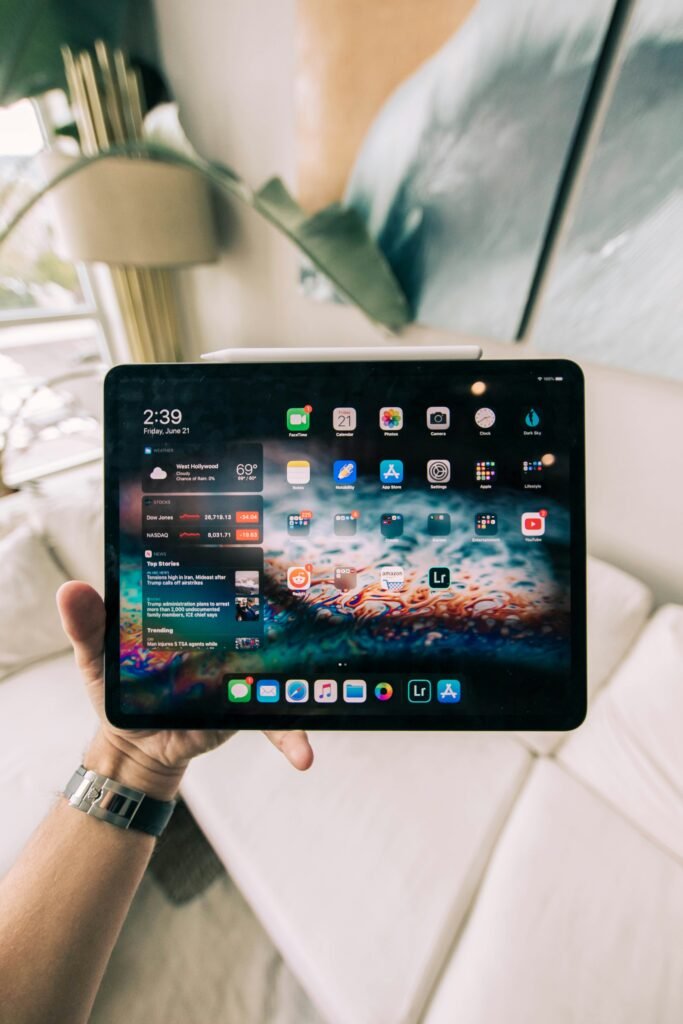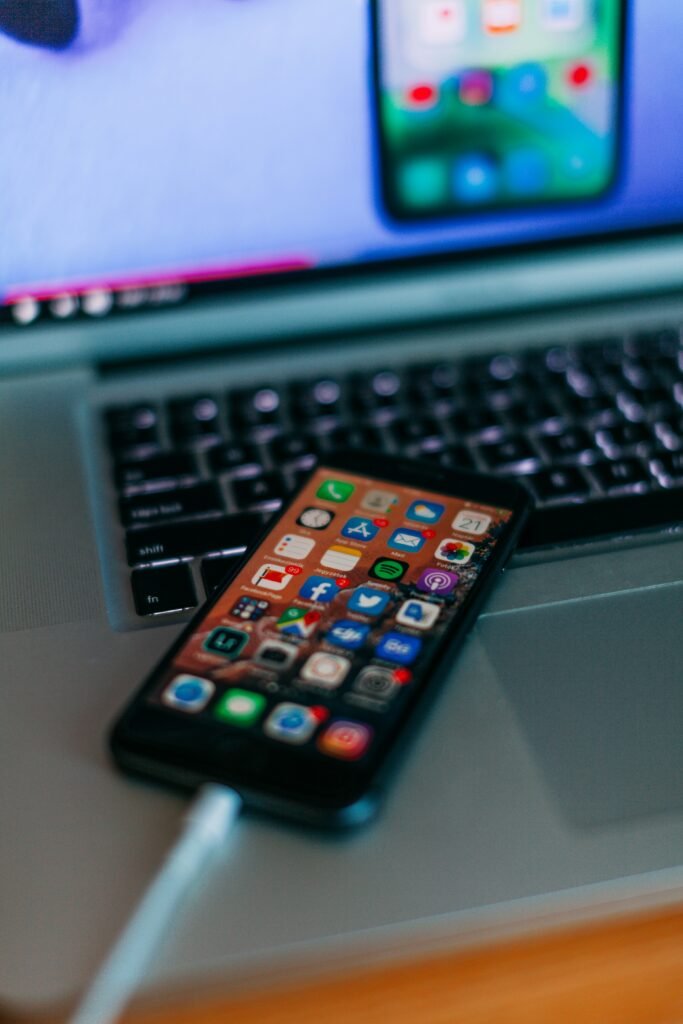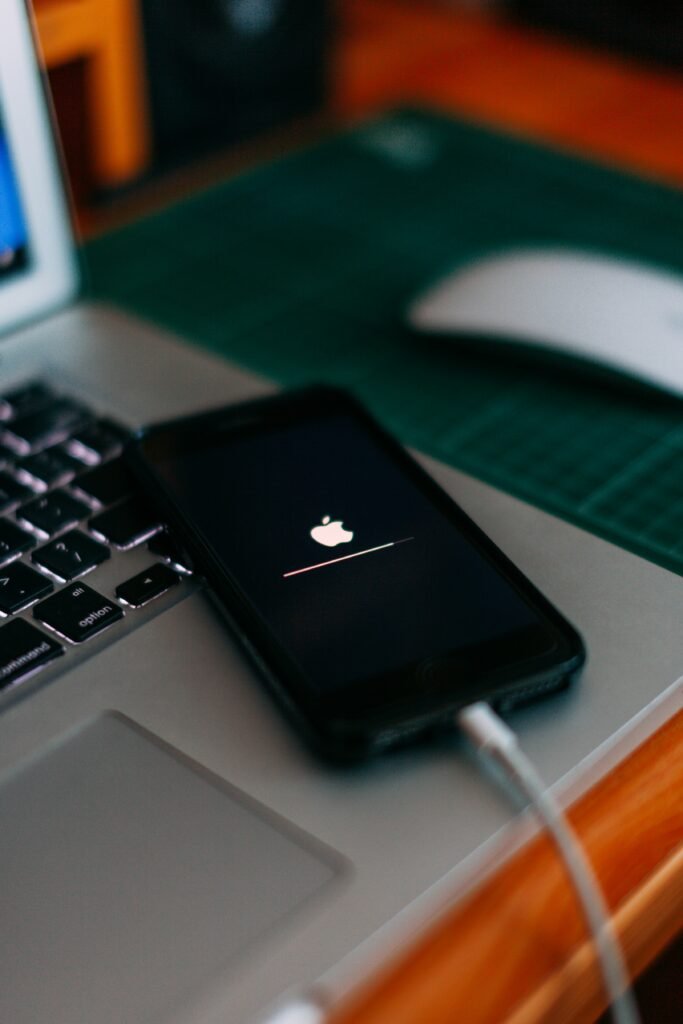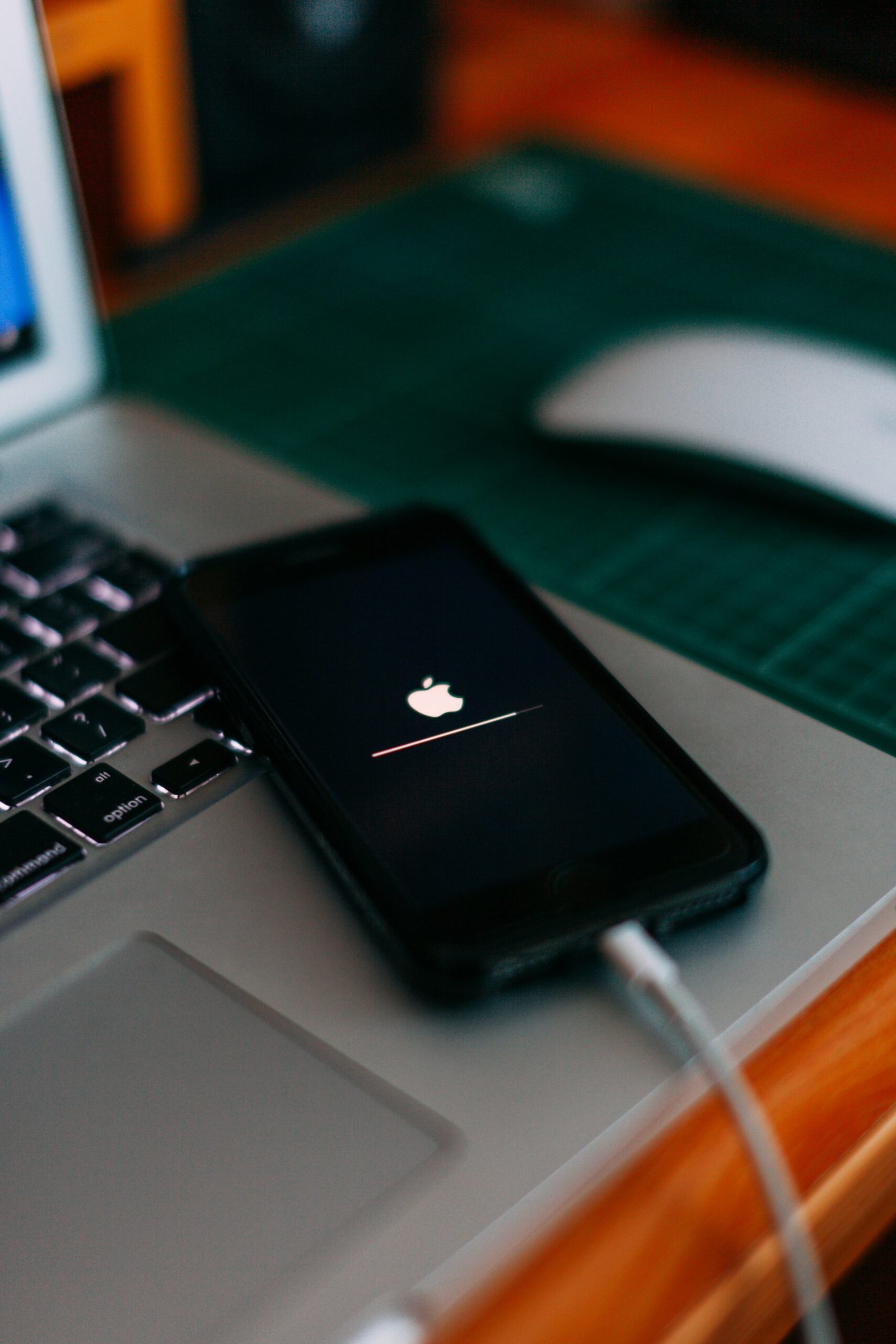Imagine being able to watch videos or take FaceTime calls on your iPhone while simultaneously checking emails, browsing the web, or even playing games. With the introduction of iOS 14, Apple has brought Picture in Picture Mode to the iPhone, allowing users to do just that. Whether you’re catching up on your favorite TV shows, having important conversations, or simply multitasking, Picture in Picture Mode lets you keep your video or FaceTime call window floating on top of other apps. Even though not all apps currently support this feature, Apple’s own apps like Apple TV seamlessly integrate Picture in Picture Mode. And for YouTube lovers, fear not, as you can still access this mode through the YouTube website on Safari. The best part? Customize the size and position of the Picture in Picture window to suit your preferences, making it the perfect addition to your iPhone experience.

What is Picture in Picture Mode in iOS 14?
Picture in Picture (PiP) Mode in iOS 14 is a multitasking feature that allows you to watch videos or take FaceTime calls while simultaneously using other apps on your iPhone. It provides a convenient way to continue with your tasks while not missing out on your favorite shows or important conversations.
Definition of Picture in Picture Mode
Picture in Picture Mode refers to the ability to overlay a small window displaying video content or a FaceTime call on top of other apps on your iPhone. This window can be moved around the screen, resized, and even locked in place, giving you flexibility in how you interact with it while multitasking.
Benefits of using Picture in Picture Mode
There are several benefits to using Picture in Picture Mode on your iPhone. Firstly, it enhances multitasking by allowing you to continue watching videos or participating in FaceTime calls while using other apps. This means you can catch up on your favorite TV shows, videos, or have important FaceTime conversations without interrupting your workflow. Secondly, it increases productivity as you can access multiple apps simultaneously, making it easier to stay engaged and complete tasks efficiently. Lastly, it provides a seamless and uninterrupted viewing experience by keeping your video or FaceTime call visible even when you switch to other tasks on your iPhone.
How Picture in Picture Mode enhances multitasking on iPhone
Picture in Picture Mode enhances multitasking on your iPhone by enabling you to have a video or FaceTime call window always visible on your screen, even as you navigate through different apps. This allows you to use your device more efficiently and effectively by eliminating the need to constantly switch between apps. Whether you’re watching a tutorial while working on a project, keeping up with the news while responding to emails, or keeping an eye on a FaceTime call while browsing the web, Picture in Picture Mode enhances your multitasking capabilities, making you more productive and saving you time.
How to Access Picture in Picture Mode on iPhone
To access Picture in Picture Mode on your iPhone, follow these simple steps:
Steps to enable Picture in Picture Mode:
- Start by playing a video or initiating a FaceTime call on a compatible app that supports Picture in Picture Mode.
- Once the video or call is in progress, swipe up from the bottom of the screen to access the app switcher.
- Locate the video or FaceTime call window in the app switcher and swipe it away from the bottom towards the right or left edge of the screen.
- The video or call will now transition into Picture in Picture Mode, allowing you to continue watching or participating while using other apps.
Compatible apps that support Picture in Picture Mode:
While not all apps currently support Picture in Picture Mode, many popular apps have already implemented this feature. Some examples of apps that support Picture in Picture Mode include Safari (for videos), Apple TV, Hulu, Netflix, and Zoom. It’s important to note that app developers need to specifically implement support for Picture in Picture Mode, so some apps may not yet have this capability.
Workaround for accessing Picture in Picture Mode on YouTube:
The YouTube app does not currently support Picture in Picture Mode on iPhone. However, there is a workaround to access Picture in Picture Mode while using YouTube. Simply open the YouTube website on Safari and play the desired video. Once the video starts playing, exit Safari and the video will automatically transition into Picture in Picture Mode. This workaround enables you to enjoy YouTube videos on your iPhone while multitasking with other apps.

Using Picture in Picture Mode with FaceTime
FaceTime is one of the native Apple apps that seamlessly integrates with Picture in Picture Mode, enhancing your FaceTime experience. Here’s how FaceTime works with Picture in Picture Mode:
How FaceTime integrates with Picture in Picture Mode:
When you’re on a FaceTime call and switch to another app, the FaceTime call window automatically transitions into Picture in Picture Mode. This means you can keep the FaceTime call window visible on the screen while using other apps. This allows you to continue your conversation without interruptions, even if you need to perform certain tasks or access information from other apps. FaceTime in Picture in Picture Mode ensures that you won’t miss out on important moments or connections while multitasking on your iPhone.
Benefits of using FaceTime in Picture in Picture Mode:
Using FaceTime in Picture in Picture Mode provides several benefits. Firstly, it gives you the flexibility to continue your FaceTime call while accessing other apps, enabling you to look up information or share content with the person you’re talking to. Secondly, you can engage in a FaceTime call while being productive with other tasks, such as responding to emails or taking notes. Lastly, FaceTime in Picture in Picture Mode allows you to maintain eye contact with the other person on the call, as the small call window remains visible on the screen even while using other apps.
Customizing the Picture in Picture Window
The Picture in Picture window on your iPhone is customizable, giving you control over its size, position, and behavior. Here are the customization options available:
Adjusting the size of the Picture in Picture window:
To adjust the size of the Picture in Picture window, simply pinch or expand two fingers on the window. This gesture allows you to make the window larger or smaller, depending on your preference. You can resize the window to ensure it doesn’t obstruct important content or simply to match your viewing preferences.
Changing the position of the Picture in Picture window:
To change the position of the Picture in Picture window, use a long press gesture on the window with a single finger. Once the window is selected, move it to the desired location by dragging it around the screen. This flexibility allows you to position the window in a way that doesn’t interfere with other elements or gets in the way of your work.
Locking the Picture in Picture window in place:
To lock the Picture in Picture window in place, tap on the window to bring up the controls. Within the controls, you’ll find a lock icon. Tap on the lock icon to prevent the window from being accidentally moved or resized. Locking the Picture in Picture window ensures that it stays in its current position and size, providing stability and consistency in your multitasking experience.

Picture in Picture Mode and App Support
While Picture in Picture Mode is a useful feature, it relies on app developers implementing support for it. Here’s what you need to know about app support for Picture in Picture Mode:
Explanation of app support requirements for Picture in Picture Mode:
App developers need to incorporate Picture in Picture support within their apps for it to work seamlessly. This involves implementing the necessary code and functionalities to enable the Picture in Picture window to appear and interact with the app’s content. Apps that have adopted this feature allow users to enjoy the benefits of Picture in Picture Mode, enhancing their multitasking capabilities.
Native Apple apps that already support Picture in Picture Mode:
Apple has already implemented Picture in Picture support in several of its native apps. This means that you can enjoy Picture in Picture Mode without any additional installations or updates. Some native Apple apps that support Picture in Picture Mode include Safari (for videos), Apple TV, FaceTime, Podcasts, and Maps. These apps seamlessly integrate with the Picture in Picture feature, providing an enhanced user experience.
Expectations for third-party app adoption of Picture in Picture Mode:
As more iPhone users adopt iOS 14 and its new features, it is expected that third-party app developers will implement support for Picture in Picture Mode. App developers are continually updating their apps to provide the best possible user experience, and Picture in Picture Mode can greatly enhance their app’s functionality. With time, we can expect to see increased adoption of Picture in Picture Mode by popular third-party apps, allowing users to enjoy multitasking across a wide range of applications.
Comparing Picture in Picture Mode to Split View and Slide Over
While Picture in Picture Mode enhances multitasking on iPhone, it is worth comparing it to other multitasking features available on iOS 14. Here’s a comparison of Picture in Picture Mode, Split View, and Slide Over:
Differences between Picture in Picture Mode, Split View, and Slide Over:
- Picture in Picture Mode: Picture in Picture Mode allows you to overlay a video or FaceTime call window on top of other apps, providing a floating and resizable window that stays visible while using other apps.
- Split View: Split View enables you to have two apps open side-by-side on your iPhone’s screen, allowing you to use both apps simultaneously and interact with their content independently.
- Slide Over: Slide Over allows you to have a secondary app appear in a small sidebar window that can be accessed by swiping from the right edge of the screen. This feature is particularly useful for quick access to apps without interrupting your current task.
Use cases for each multitasking feature:
- Picture in Picture Mode: Picture in Picture Mode is ideal for scenarios where you want to continue watching a video or participating in a FaceTime call while using other apps. It’s useful for multitasking while still keeping important content or conversations visible.
- Split View: Split View is great for tasks that require simultaneous access to multiple apps. For example, you can have Safari open alongside Notes to research and take notes, or have Mail open while referencing a document in Pages.
- Slide Over: Slide Over is beneficial for quickly checking or accessing information from a secondary app without fully switching tasks. You can use Slide Over to check your calendar, reply to messages, or jot down a quick note while primarily using another app.
By understanding the differences and use cases of each multitasking feature, you can choose the most suitable option based on your specific needs and preferences.
Tips and Tricks for Using Picture in Picture Mode
To make the most out of Picture in Picture Mode on your iPhone, here are some tips and tricks to consider:
Maximizing productivity with Picture in Picture Mode:
- Use Picture in Picture Mode to stay engaged with video content or FaceTime calls while performing tasks that don’t require your full attention, such as responding to emails, checking your calendar, or browsing the web.
- Pinch or expand two fingers on the Picture in Picture window to adjust its size based on your preference and the content you’re watching. This allows you to customize your viewing experience to suit your needs.
- Utilize the lock icon within the Picture in Picture window’s controls to prevent accidental movement or resizing. This ensures that the window stays in place and maintains its size.
Customizing settings for Picture in Picture:
- To access Picture in Picture settings, go to the Settings app on your iPhone, select “General,” then “Picture in Picture.” Here, you’ll find options to customize the behavior of Picture in Picture Mode, such as enabling or disabling automatic activation, adjusting the start position of the window, and controlling whether video continues playing when the Picture in Picture window is closed.
- Experiment with different start positions for the Picture in Picture window to find the most convenient location on your screen. This can be done by dragging the window to your desired position before locking it in place.
Troubleshooting common issues with Picture in Picture Mode:
- If the Picture in Picture window doesn’t appear despite being on a supported app, ensure that you have the latest version of the app installed. Some earlier versions may not have implemented support for Picture in Picture Mode.
- If the Picture in Picture window is not resizable, it may be due to certain apps or video streaming services restricting the ability to resize the window. In such cases, you can adjust your viewing experience by adjusting the position of the window, locking it in place, or utilizing other on-screen controls provided by the app.
By leveraging these tips and tricks, you can enhance your multitasking experience and make the most of Picture in Picture Mode on your iPhone.
Future Developments for Picture in Picture Mode on iOS
As iOS continues to evolve, there may be potential enhancements and updates for Picture in Picture Mode in the future. Here are some possibilities:
Potential enhancements and updates for Picture in Picture Mode:
- Expanded app support: With each iOS update, more developers are likely to implement support for Picture in Picture Mode. This means that a wider range of popular apps may soon become compatible with this multitasking feature, providing users with increased flexibility and accessibility.
- Additional customization options: Apple may introduce more customization options for Picture in Picture Mode, such as the ability to change the opacity of the window or adjust the aspect ratio. These enhancements would allow users to further personalize their multitasking experience.
- Integration with additional native apps: Apple could integrate Picture in Picture Mode with more of its native apps, expanding beyond FaceTime and Apple TV. This would enable users to enjoy Picture in Picture while engaging in various activities, such as navigating with Maps or listening to podcasts.
Apple’s plans for expanding Picture in Picture functionality:
Apple has shown a commitment to improving multitasking capabilities across its devices, including Picture in Picture Mode. While specific details about Apple’s plans for expanding Picture in Picture functionality are not yet disclosed, it is reasonable to expect continued development in this area. Apple is likely to introduce updates and enhancements to Picture in Picture Mode in future iOS versions, providing users with an even better multitasking experience.
Picture in Picture Mode on iPad vs iPhone
While Picture in Picture Mode is available on both the iPad and iPhone, there are some differences in its implementation between the two devices. Here’s a comparison of Picture in Picture Mode on the iPad and iPhone:
Differences in Picture in Picture Mode implementation between iPad and iPhone:
- Screen size: The iPad’s larger screen size allows for a more immersive Picture in Picture experience, with the video or call window taking up less real estate on the screen compared to the iPhone.
- Gestures: On the iPad, you can resize the Picture in Picture window by pinching or expanding two fingers on the window, similar to the iPhone. However, on the iPad, you can also drag the window to different corners of the screen to change its position.
- Multitasking with multiple apps: The iPad’s multitasking capabilities extend beyond Picture in Picture Mode. With features like Split View and Slide Over, you can have multiple apps open and actively interact with them simultaneously, further enhancing your productivity.
Advantages and limitations of Picture in Picture on each device:
- iPhone advantages: Picture in Picture Mode on the iPhone allows for easy multitasking while on the go. Its compact size makes it ideal for quickly accessing videos or FaceTime calls while continuing with other tasks. Its compatibility with a wide range of apps ensures that you can enjoy the benefits of Picture in Picture Mode across various activities.
- iPad advantages: The larger screen size of the iPad enhances the Picture in Picture experience, allowing for a more immersive viewing or calling experience. The additional multitasking features available on the iPad, such as Split View and Slide Over, make it a powerful device for simultaneously using multiple apps.
While Picture in Picture Mode is a valuable feature on both the iPad and iPhone, the advantages and limitations may differ based on the device’s form factor and multitasking capabilities.
Conclusion
Picture in Picture Mode in iOS 14 offers a convenient way to multitask on your iPhone without sacrificing your enjoyment of videos or FaceTime calls. By overlaying a resizable and customizable window on top of other apps, Picture in Picture Mode enhances productivity and allows for a seamless multitasking experience. With the ability to customize the window’s size and position, you have control over how you interact with your content while multitasking. Although app support for Picture in Picture Mode is still growing, Apple’s native apps and popular third-party apps have already adopted this feature, and its adoption is expected to increase over time. Additionally, Picture in Picture Mode can be compared to other multitasking features like Split View and Slide Over, each with their own unique benefits and use cases. With tips and tricks, you can maximize your productivity and customize your Picture in Picture experience to suit your needs. As iOS continues to evolve, there may be future enhancements and updates for Picture in Picture Mode, further improving its functionality and expanding its integration with native and third-party apps. Whether you’re using Picture in Picture Mode on your iPad or iPhone, it provides a valuable multitasking tool that enhances your iOS experience.








